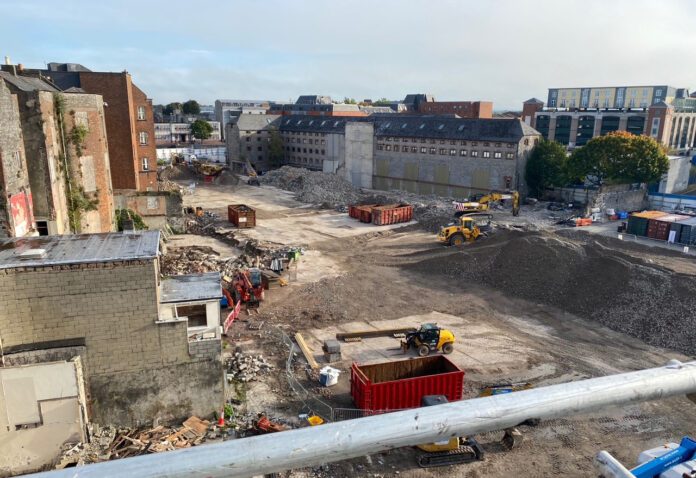
WORK on the €200 million Opera Site development, which is expected to kickstart Limerick’s economic recovery, has been hit by a five-month delay because of the Covid pandemic.
The city centre site was acquired by Limerick City and County Council in 2011 after a previous plan to develop it failed during the mid-2000 economic crash, and handed over to “Limerick Twenty Thirty DAC” – a development company set up and owned by the Council.
A spokesman for Limerick 2030 said it is targeting completion of the demolition and enabling works by the end of March, followed by the construction of the common basement for the development, which spans a huge portion of the site.
However, it has not all be plain sailing and Covid forced a five-month work stoppage on site.
The spokesman said that all non-essential work ceased in early January last year and the site didn’t reopen until early May.
“That took more than five months out of our demolition and enabling works programme and yet as we came towards the close of 2021, we had 75 per cent of these works complete. That’s testament to the work of our own team, our project managers Cogent Associates and contractors John Sisk & Son as they made up so much of the lost ground since May”.
The development, which is expected to accommodate 3,000 workers, was granted planning in February 2020, and construction staff have clocked up “30,000 hours of accident free work” preparing the site for construction.
A swathe of buildings constructed between the 1950s and 1980s have been cleared, including the Cahill May Roberts office and warehouse on Bank Place; Bogues Yard garages and the 1980s extension to the Granary which included the Library and the former Docs nightclub. Other buildings demolished include more recent extensions to the Georgian Buildings on Rutland and Patrick Street and the former AIB Bank on the corner of Ellen Street”.
Thirty people are employed in the highly skilled demolition work and the construction workforce will increase to a maximum of 500 at peak construction phase.
In line with planning permission, 16 out of 18 buildings deemed to be of historic significance are being retained and work continues to provide structural supports and prevent further deterioration to these buildings.
Limerick 2030 chief executive David Conway has previously said the development will trigger “the most important and timely economic stimulant of modern times in the city, and allow Limerick to kick-start the Covid-19 economic recovery”.
The 3.7 acre “mixed use” development, to include a new public square with pedestrian links to the city centre, is fully funded mainly by loans from the European Investment Bank and the Council of European Development Bank.
The project remains on course to be delivered within six years.
The site was valued at more than €100 million at the height of the boom but the council purchased it for €12 million in 2011 following the economic crash.


